IT’S A DISASTER: Movie Reviews of The Magnificent Seven and Deepwater Horizon by Howard Casner
Posted: October 4, 2016 | Author: Donald | Filed under: Uncategorized | Tags: Akira Kurosawa, Antoine Fuqua, Battle Beyond The Stars, Byung-hun Lee, Chris Pratt, Colby Parker, Deepwater Horizon, Ethan Hawke, Gabriel Fleming, John Malcovich, Jr., Kurt Russell, Manuel Garcia-Rulfo, Mark Wahlberg, Martin Sensmeier, Matthew Michael Carnahan, Matthew Sand, Nic Pizzolatto, Peter Berg, Peter Sarsgaard, Richard Wenk, Steve Jablonsky, The Magnificent Seven, The Seven Samurai, Vincent D’Onofrio, Washington | 4 Comments »For questions: hcasner@aol.com
First, a word from our sponsors: I wanted to say thank you to everyone who contributed to our Indiegogo campaign for 15 Conversations in 10 Minutes. We did very well due to you folks. For those who weren’t able to give, keep us in your thoughts. And if you are able to contribute in the future, contact me and I’ll tell you how. I will even honor the perks on the original campaign.
I am now offering a new consultation service: so much emphasis has been given lately to the importance of the opening of your screenplay, I now offer coverage for the first twenty pages at the cost of $20.00. For those who don’t want to have full coverage on their screenplay at this time, but want to know how well their script is working with the opening pages, this is perfect for you. I’ll help you not lose the reader on page one.
Ever wonder what a reader for a contest or agency thinks when he reads your screenplay? FosCheck out my new e-book published on Amazon: Rantings and Ravings of a Screenplay Reader, including my series of essays, What I Learned Reading for Contests This Year, and my film reviews of 2013. Only $2.99. http://ow.ly/xN31r
and check out my Script Consultation Services: http://ow.ly/HPxKE
Warning: SPOILERS
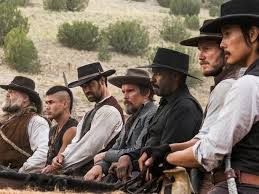 Two films have opened as of late which have disaster in common. One falls into that genre and one almost is one.
Two films have opened as of late which have disaster in common. One falls into that genre and one almost is one.
There is one transcendent moment in the most recent version of The Magnificent Seven. It comes at the end as the credits begin by showing each of the characters. At this point, behind them, one can here the incredibly epic score by Elmer Bernstein from the 1960 version. It’s stirring, splendid, glorious, stunning…
Unfortunately, this tiny fraction of the movie only really ended up serving one purpose: it clearly reminded the audience of the earlier version, and not to the benefit of the present one, and only went to show how bland and uninteresting the music is when it comes to James Horner and Simon Franklin’s score for this Western remake of a remake (yes, it apparently took two people to come up with something so dull). Read the rest of this entry »
ART ISN’T EASY: Movie Reviews of Straight Outta Compton and She’s Funny That Way by Howard Casner
Posted: September 1, 2015 | Author: Donald | Filed under: Uncategorized | Tags: Andrea Berloff, Austin Pendleton, Corey Hawkins, Cybil Shepherd, Dr. Dre, Eazy-E, F. Gary Gray, George Morfogen, Ice Cube, Ileana Douglas, Imogen Poots, Jason Mitchell, Jennnifer Anniston, Joanna Lumley, Jonathan Herman, Jr., Kathryn Hahn, Louise Stratton, Michael Shannon, Owen Wilson, O’Shea Jackson, Paul Giamatti, Peter Bogdanovich, R. Marcus Taylor, Rhys Ifans, Richard Lewis, She’s Funny That Way, Straight Outta Compton, Suge Knight, Tatum O’Neal, Tovah Feldshuh, Will Forte | 798 Comments »First, a word from our sponsors: I am now offering a new service: so much emphasis has been given lately to the importance of the opening of your screenplay, I now offer coverage for the first twenty pages at the cost of $20.00. For those who don’t want to have full coverage on their screenplay at this time, but want to know how well their script is working with the opening pages, this is perfect for you. I’ll help you not lose the reader on page one.
Ever wonder what a reader for a contest or agency thinks when he reads your screenplay? Check out my new e-book published on Amazon: Rantings and Ravings of a Screenplay Reader, including my series of essays, What I Learned Reading for Contests This Year, and my film reviews of 2013. Only $2.99. http://ow.ly/xN31r
and check out my Script Consultation Services: http://ow.ly/HPxKE
Warning: SPOILERS
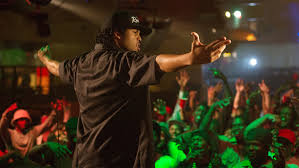 Though bearing almost no resemblance in any other way (to say the least), two movies have opened of late that demonstrate, to paraphrase Stephen Sondheim, that art sure isn’t easy.
Though bearing almost no resemblance in any other way (to say the least), two movies have opened of late that demonstrate, to paraphrase Stephen Sondheim, that art sure isn’t easy.
Straight Outta Compton is a tale told of the rise of three best friends who stop becoming friends and then find their way back to being friends before the credits come up (or as we say in the biz, guys meet guys, guys lose guys, guys get guys). It’s the tale of Eazy-E, Ice Cube and Dr. Dre who took the universe by storm with this newfangled sound called Rap and changed the world of music forever.
The film basically has four types of scenes in it: the first are scenes that show the horrors of growing up in the projects and how blacks are treated by the authorities (even when the authorities are black and in one case, find themselves to be music critics); second are the scenes that show the relationship of the three central characters, especially on tour, including the downtime of hanging out and getting high and laid; third are scenes of confrontation between the artists and their managers; and the fourth are the scenes where they actually perform.
I would say that all but the second set of scenes work well, sometimes astoundingly well, and are strong and rich in dramatic conflict. But the story tends to stall whenever the characters are doing little but hanging around just being themselves (the Beatles from A Hard Day’s Night they ain’t). Most of these scenes have little vibrancy or originality to them, while others resemble and have as much depth and insight as an MTV music video from the same period.
And as riveting as so much of the film is, somewhere in the second half it starts to lose forward momentum and I did sort of wish that they would wrap things up already at times. Read the rest of this entry »
AVENGERS ONE, SMALL DEFENSELESS EASTERN EUROPEAN TOWN, ZERO: Movie review of Avengers: The Age of Ultron by Howard Casner
Posted: May 9, 2015 | Author: Donald | Filed under: Uncategorized | Tags: Avengers: Age of Ultron, Chris Evans, Chris Hemsworth, James Spader, Jeremy Renner, Joss Whedon, Jr., Mark Ruffalo, Marvel, Paul Bettany, Robert Downey, Scarlett Johansson | 1 Comment »First, a word from our sponsors. Ever wonder what a reader for a contest or agency thinks when he reads your screenplay? Check out my new e-book published on Amazon: Rantings and Ravings of a Screenplay Reader, including my series of essays, What I Learned Reading for Contests This Year, and my film reviews of 2013. Only $2.99. http://ow.ly/xN31r
and check out my Script Consultation Services: http://ow.ly/HPxKE
Warning: SPOILERS
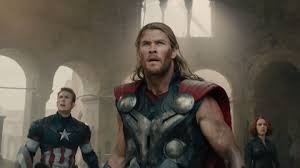 It seems that after razing New York City to the earth more than a few times, the makers of movies from Marvel comics have now decided to turn their eyes on a smaller, more defenseless municipality in the fictional Easter European nation of Sokovia, smashing it to smithereens in the new tentpole film Avengers: Age of Ultron.
It seems that after razing New York City to the earth more than a few times, the makers of movies from Marvel comics have now decided to turn their eyes on a smaller, more defenseless municipality in the fictional Easter European nation of Sokovia, smashing it to smithereens in the new tentpole film Avengers: Age of Ultron.
And one really has to feel for this poor little town. Not only has it survived World War I, World War II and the Holocaust, the Cold War occupation (under Stalin, even) and the difficult adjustment after the fall of the USSR, it once again is going to be ravaged, this time by a man made robot with sentience.
I mean, I don’t know what this city did to piss off writer/director Joss Whedon, but it must have been really something. It really gets the shit kicked out of it. Read the rest of this entry »
WHAT HAPPENED TO ONE THROUGH FIVE: Movie reviews of Big Hero 6 and The Tale of the Princess Kaguya by Howard Casner
Posted: November 23, 2014 | Author: Donald | Filed under: Uncategorized | Tags: Alan Tudyk, and George Segal, Beau Bridges, Big Hero 6, Chloȅ Grace Moretz, Chris Williams, Daman Wayans, Daniel Gerson and Robert L. Baird, Don Hall, Isao Sakaguchi, James Caan, James Cromwell, James Marsden, Joe Hisaishi, Jordan Roberts, Jr., Lucy Liu, Mary Steenburgen, Maya Rudolph, Oliver Platt, Riko Sakaguchi, Ryan Potter, Scott Adsit, Stan Lee, Studio Ghibli, T.J. Miller, The Tale of the Princess Kaguya | 1,463 Comments »First, a word from our sponsors. Ever wonder what a reader for a contest or agency thinks when he reads your screenplay? Check out my new e-book published on Amazon: Rantings and Ravings of a Screenplay Reader, including my series of essays, What I Learned Reading for Contests This Year, and my film reviews of 2013. Only $2.99. http://ow.ly/xN31r
Warning: SPOILERS
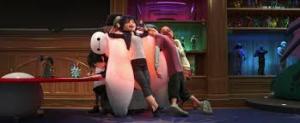 I’m sure you’ve heard the old joke, the one about the guy who said, “I’m not going to see Henry V because I haven’t seen the first four yet”?
I’m sure you’ve heard the old joke, the one about the guy who said, “I’m not going to see Henry V because I haven’t seen the first four yet”?
Well, don’t worry, fair filmgoers, Big Hero 6 is not a sequel (though believe me, to paraphrase Paul Thomas Anderson, there will be sequels). It’s more an origin story of a group of X-Men like super young adults set in a city named San Fransokyo (so called because it’s an alternative future where Japanese immigrants rebuilt the city where I left my heart after the 1906 earthquake).
Big Hero 6 is a fun and satisfying enough animated movie, especially in the first half where it tends to show a bit more heart and emphasizes emotional resonance over the more prevalent action oriented approach of the second half.
True, it’s fairly familiar and almost Disney paint by number. I mean, c’mon, you gotta know that a mother or father or mother figure or father figure to the central character is going to die early on because, well, it’s Disney, and the only thing that studio likes more than making animated movies that rake in a ton of money is trying to traumatize pre-teens in the first fifteen minutes of their films (unless it’s about a dog, then they wait until the last fifteen). Read the rest of this entry »
MOVIE MURDER MOST FOUL: Movie Reviews of The Judge and The Blue Room by Howard Casner
Posted: October 20, 2014 | Author: Donald | Filed under: Uncategorized | Tags: Balthazar Getty, Billy Bob Thornton, David Dobkin, David Kromholtz, Dax Shephard, Georges Simenon, Jeremy Strong, Jr., Lea Drucker, Mathieu Almaric, Nick Schenk and Bill Dubuque, Robert Downey, Robert Duvall, Stephanie Cleau, The Blue Room, The Judge, Vera Farmiga, Vincent D’Onofrio | Leave a comment »First, a word from our sponsors. Ever wonder what a reader for a contest or agency thinks when he reads your screenplay? Check out my new e-book published on Amazon: Rantings and Ravings of a Screenplay Reader, including my series of essays, What I Learned Reading for Contests This Year, and my film reviews of 2013. Only $2.99. http://ow.ly/xN31r
Warning: SPOILERS
 How can I cliché thee? Let me count the ways.
How can I cliché thee? Let me count the ways.
In the opening scene of The Judge, the new courtroom cum father/son we hate each other so much we love each other drama, defense attorney Hank Palmer (the kind of attorney who’ll defend anybody for anything as long as the price is right) is confronted by the prosecuting attorney Mike Kattan (the type of character that believes in truth, justice and the American way, so the filmmakers chose an actor, David Kromholtz, whose mere appearance would elicit laughter, to play the part next to the Ironman, alpha male, washboard stomach Robert Downey, Jr., who plays Hank) and they have one of those scene thingies where they debate the morality of it all.
At the end of the discussion (accompanied by mature goings on like Hank peeing on Mike’s pants), Hank sums up all the clichés that have taken place in that one encounter (and using the word “cliché” to describe it).
If the writers, Nick Schenk and Bill Dubuque, were attempting to get away with the use of overdone platitudes, familiar formula and trite tropes by calling attention to what they were doing—well, okay, in their defense one can at least one can say they knew what they were doing when they were doing it and were trying to do something about it. Read the rest of this entry »
BRAIN DEAD: Movie Review of Transcendence by Howard Casner
Posted: April 24, 2014 | Author: Donald | Filed under: Uncategorized | Tags: Clifton Collins, Colossus: the Forbin Project, Jack Paglen, Johnny Depp, Jr., Kate Mara, Morgan Freeman, Paul Bettany, Rebecca Hall, Transcendence, Wally Pfister | 8 Comments »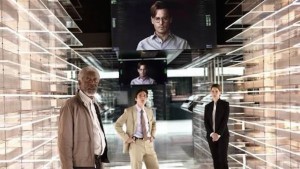 Transcendence (or perhaps more aptly titled Trance-enduscence), the new sci-fi thriller written by Jack Paglen and directed by Wally Pfister (a first feature for both, though Pfister was the cinematographer on many Christopher Nolan films), is about a scientist, Will Caster, who tries to turn the world into a dystopian Eden when his brain is uploaded into a computer.
Transcendence (or perhaps more aptly titled Trance-enduscence), the new sci-fi thriller written by Jack Paglen and directed by Wally Pfister (a first feature for both, though Pfister was the cinematographer on many Christopher Nolan films), is about a scientist, Will Caster, who tries to turn the world into a dystopian Eden when his brain is uploaded into a computer.
The basic structure is as familiar as any standard piece of Victorian literature, the period when Mary Shelly wrote Frankenstein, a horror story about an egotistical scientist who tries to play God by creating a man out of a bunch of miscellaneous parts from dead bodies. Read the rest of this entry »
Movie Review of LEE DANIELS’ THE BUTLER by Howard Casner
Posted: August 27, 2013 | Author: Donald | Filed under: Uncategorized | Tags: Adriane Lenox, Cuba Gooding, Danny Strong, Forest Whitaker, Jr., Lee Daniels, Lenny Kravitz, Oprah Winfrey, Terence Howard, The Butler | 1,245 Comments »I think it’s safe to say that Lee Daniels’ The Butler is no Django Unchained when it comes to race relations. No, this chronicle of the life of a black butler who served at the White House over eight administrations is a bit too well intentioned for that. At the same time, it’s one of those well intentioned movies that probably would have benefited from being a little less well intentioned.
…The Butler is what is usually called middle brow—in other words, it’s a film that deals with serious and challenging subject matter, but does it in a way that will never seriously challenge anyone (while making them think it does). It’s a movie that takes no real chances, has no real edge, does nothing new, because in the end, the choices the producers, the director (Lee Daniels, hence the title) and writer Danny Strong make, feel as if they were made with a firm eye on the box office. This doesn’t mean that the movie isn’t entertaining. It’s definitely that (though somewhere towards the end, one does start to feel its length). But in the end, it’s little more than that.
For those of you who have been on a walking tour of Siberia for the last few months, Lee Daniels’ The Butler revolves around Cecil Gaines, a black man who rose from cotton picker’s son to being a domestic at 1600 Pennsylvania Avenue. The story is basically ironic. It’s about a man who is fixed squarely in the midst of history (he can’t seem to turn around without it smacking him in the face), yet at the same time, takes absolutely no part in it. He watches it go by, like a parade, but never actually marches with it.
The strongest scenes in the film are the scenes of everyday life of Gaines’ family and friends, the times they gather to gossip, play cards, drink. There is an incredible naturalness to these scenes, an improvisational verisimilitude that is often riveting. At times it feels as if one could watch these scenes of domesticity flow on forever. All of which leads to a second bit of irony: the less political the movie is, the more alive and vibrant it is. Whenever the focus is on the issues, the more on the nose and obvious it becomes until it takes on the weighty tone of one of those message pictures from the old days of MGM and Twentieth Century Fox.
By using what is called poetic license, screenwriter Strong is able to dramatize every single important civil rights issue and event from the 1950’s on. He does this by giving Gaines a “the times, they are a changing” son (in real life, the character Gaines is based on had no such troubled relationship with his offspring). Whatever event Gaines doesn’t witness himself, his son can experience them by going on the road with the freedom riders, being a personal friend of Martin Luther King or joining The Black Panthers. If this method of story telling comes across as convenient, well, it is. And while the scenes at Gaines’ home feel fresh and felt first hand, the rest of the movie comes across more like a Cliff Notes (remember those) version of race relations in America.
This is seconded by the casting of such stars as Robin Williams, Vanessa Redgrave, James Marsden and John Cusack in the white roles. Much has been made of this stunt casting. But it should also be noted that this is stunt casting in which none of the cast is given any stunts to do. Almost no one really resembles, and at times barely sounds like, their real life counterparts (the make up feels especially uninspired). Only Jane Fonda really escapes unscathed in her role as Nancy Regan (a further irony: the former anti-war activist playing the people, here and in The Newsroom, that she use to rail against when she was younger).
But if the movie is saved, it is saved by the dynamic performances of the rest of the cast. Forest Whitaker is perfectly fine as Gaines, but it’s Terence Howard, Adriane Lenox, Cuba Gooding, Jr. and Lenny Kravitz who shine as Gaines’ fellow workers and neighbors.
However, towering over everyone is Ms. Oprah Winfrey who takes no prisoners with her performance as Gaines’s wife. Before her appearance, the movie is little more than sincere, a bit stiff and familiar. But from her first appearance, slightly slattern, obviously tipsy, a cigarette dangling precariously from her mouth, she brings an energy and intensity to the screen that was missing earlier. It’s a deeply moving performance.
Two more issues to be noted. First, in the social media and criticism world that surrounds this movie, there is a suggestion that this is an original and ground breaking story, something that’s never been told before. But are people really this young? In many ways, one could make the argument that this is little more than a sequel to a popular TV mini-series from 1979 called Backstairs at the White House which dramatized the lives of people like Gaines from the time of Taft to Eisenhower (with Andrew Duggan in the Robin Williams role).
Second, I remember when there was a lot of criticism of the movie The Help, a movie about southern domestics, criticism that often came out before the movie was even released. I’m not sure why there was so much anger toward that film, but not toward this one. Gaines is far more passive than any of the characters in The Help, all of whom were far more willing to risk their lives and positions than Gaines would ever think to do (the most he does is demand equal pay for blacks as for whites, but he demands it at such a late date and so near his retirement, it seems a hollow victory and has none of the emotional resonance that the decisions made by the characters in The Help did). And if you’re one of the ones who thought the maids in the earlier film were stereotypes, then logically you should consider Gaines to be something out of a 1930’s movie. For those of you who trumpeted Lee Daniel’s The Butler, but criticized The Help, you not only should have your head examined, you need to apologize to Viola Davis and Octavia Spencer.
Movie Review of IRON MAN 3 by Howard Casner
Posted: May 3, 2013 | Author: Donald | Filed under: Uncategorized | Tags: Andrew Lauer, Ben Kingsley, Dale Dickey, Don Cheadle, Drew Pearce, Guy Pearce, Gwyneth Paltrow, Iron Man 3, Jr., Rebecca Hall, Robert Downey, Shane Black, Ty Simpkins | 5 Comments »Iron Man 3 is one of those movies you don’t really look forward to seeing, but when you do, it actually turns out to be much better than you ever thought it would be. In fact, I think I’ll go out on a limb a little bit here and say that it’s a pretty nifty movie and you won’t be disappointed.
The beginning did fill me with a sense of foreboding. The whole thing begins with a flashback in which all the actors pushed their characters just a bit much (Guy Pearce is particularly weak here; well, actually, I thought he was embarrassingly bad, but perhaps that’s just me) and the humor was just a bit too, too. But once everything jumps to 2013, the film quickly finds its sea legs and we’re off on an adventure that is basically, as is the norm for a Marvel superhero, an existential crisis meets the apocalypse.
Not everything works quite as well as it might. Robert Downey, Jr., back once again as the man in the tuna can, can’t quite sell his anxiety attacks and his voice over is a bit clunky at times (though it does lead to a nice little punch line at the end which means, non-spoiler alert, you must, MUST, stay in your seat until that last little credit has left the screen). But let’s not be petty. Director Shane Black, who co-wrote the screenplay with Drew Pearce, has filled the dialog with tons of wit of the tongue planted firmly in check kind and has come up with a story in which excitement abounds by leaps and.
But perhaps what really makes this entry is an unexpected delight of a first rate supporting cast. In fact, in many ways, that’s all this movie is. Not a series of action scenes filled with CGI special effects in which a director is trying to make up for his penis size, but a series of roundelays in which Robert Downey, Jr.’s acting style has a pax de duex with one character after another. In fact, as a friend of mine pointed out, this was an Iron Man movie without Iron Man since Tony Stark is separated from his body armor for such long periods of time, he actually has to solve the problem as a mere mortal like the rest of us. He’s also more than dependent on his sidekicks than usual, Gwyneth Paltrow as Pepper Pot and Don Cheadle as Rhodes, both of whom made the wise decision of sticking around for the paycheck (they’re both very good, Paltrow surprisingly so).
But to get back to subject, these scene stealers include such cameos as the not seen enough Dale Dickey as the mother of a suspected suicide bomber (I guess she’s the person you go for if you can’t get Melissa Leo); Andrew Lauer as an “I’m your biggest fan” satellite technician; and a series of guards who quickly realize that they aren’t paid enough for this shit. But certainly special note should be made of Ty Simpkins who plays a precocious tyke whose cajones haven’t dropped yet, but he still has enough of them to try to guilt trip Stark. If he’s not brought back for the next installment, his manager should sue.
Still, with no reflection on the aforesaids, no one can quite steal a scene like the sly Sir Ben Kingsley. Like the movie, his first scene as the Mandarin (or Man Daren in the Chinese version) filled me with a sense of foreboding as he employs just about the worst American accent I’ve heard in some time. But suddenly, he…no, sorry, I’m not supposed to say, it’s one of the best twists in the movie, and he gives the best performance in the film. I mean, when he…no, I can’t, I just can’t. You’ll just have to see it.
And what superhero, studio blockbuster would be complete without villains, villains and more villains. In fact, that was about the only thing worth the price of admission for Iron Man II, Mickey Rourke’s powerhouse performance as Ivan Vanko. Here we have Pearce as Aldrich Killian, a scientist who does some sort of rigmarole with the brain and DNA that has the unfortunate side effect of creating human time bombs (my friend said he wished they had dealt more with that and I said they could have dealt with it for the entire movie and I still wouldn’t have had any idea what they were talking about). Pearce gives one of his more relaxed performances in awhile. Oh, and Rebecca Hall is his second in command, but you’ll have to forgive me if I almost forgot her since she doesn’t really have anything to do.
But speaking of the villains, I do have to be honest and say I am a bit squeamish in the movie’s attitude toward terrorism, blaming it on bullying and a hell hath no fury like a woman scorned one night stand. It’s all a bit cartoonish, even for a comic.
But hey, arrive for the CGI and stay for the Kingsley.
Tell me what you think.











